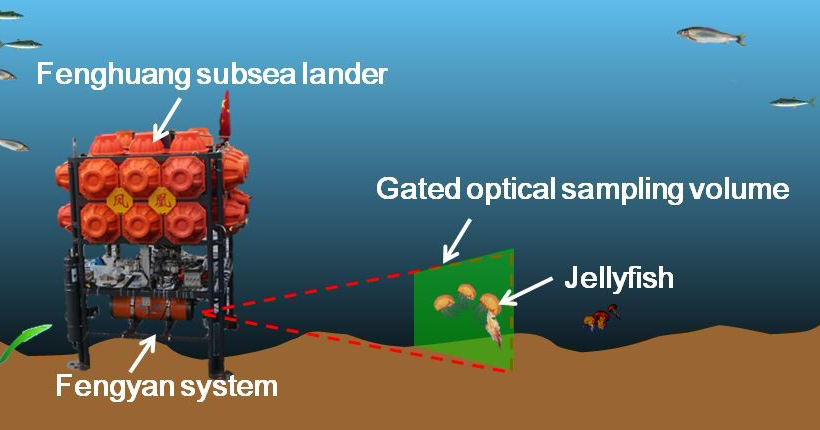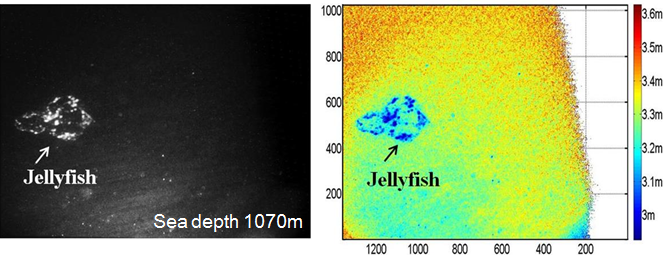New progress has been made in the underwater 3D in-situ laser imaging system “Fengyan” developed by Prof. ZHOU Yan and Prof. WANG Xinwei’ Group from June to July 2018. 3D laser images of marine macroscopic organisms like jellyfish at the sea depth of more than 1000 meters have been grasped for the first time in China. This makes a major breakthrough in the field of marine macroscopic biological observation technology in China.
The accurate acquisition of biomass distribution in temporal and spatial domain, such as abundance, particle size spectrum and population structure of marine macro organisms, is of great significance for studying the evolution of marine life and its impact on marine ecology. Traditional underwater in-situ detection cameras can only obtain two-dimensional intensity images, and lose spatial-related information like size, abundance, velocity and trajectory etc. The Fengyan system developed by Institute of Semiconductor of the Chinese Academy of Sciences uses a 532nm pulsed laser as the light source and a gated ICCD as the imaging detector. The time control unit synchronizes the gated camera and the pulsed laser to construct the gated optical sampling volume, and Fengyan realize megapixel 3D imaging based on gated range-intensity correlation algorithm with a centimeter-scaled range resolution under deep-sea environment with low light level. This provides an in-situ large-spatial-temporal and multi-parameter observation technique for marine ecological science research.
The Fengyan system was equipped with the “Fenghuang” subsea in-situ experimental lander developed by the Institute of Deep-sea Science and Engineering of the Chinese Academy of Sciences. The maximum of the experiment depth was 3291 meters under the sea. 3D video of a jellyfish with a size of about 5 cm and a speed of about 1.5 cm/sec was captured at the sea depth of 1070 meters.
This work is supported by the Key Deployment Projects of the Chinese Academy of Sciences, the Scientific Equipment Development Projects of the Chinese Academy of Sciences and the National Key Research and Development Program of China.



